Filmic Tours: Keelung and Beipu
Keelung and Beipu
Cathy Teng / photos Jimmy Lin / tr. by Brandon Yen
January 2025

Keelung’s magical ambience and Beipu’s elegance are captured in Grandma and Her Ghosts (1998) and Gold Leaf (2021) respectively. Productions like these showcase Taiwan’s diversity.
Are you mesmerized by the magical rendering of Keelung in the animated film Grandma and Her
Ghosts (1998)? Does the classical elegance of Chiang A-Hsin Mansion in Beipu, Hsinchu County cast its spell on you while you journey through the 12 episodes of the period drama Gold Leaf (2021)?
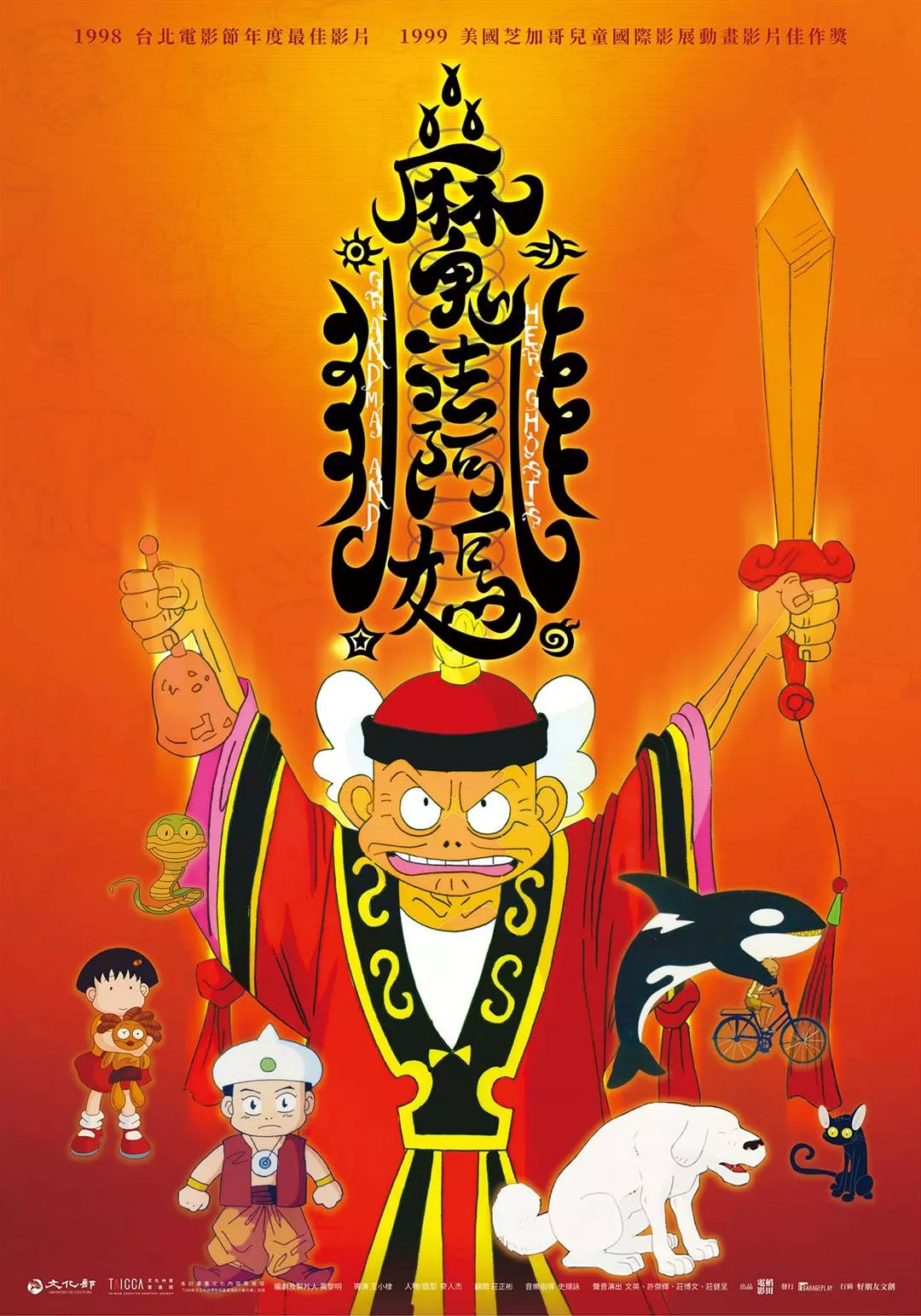
Grandma and Her Ghosts Released in 1998, Grandma and Her Ghosts represents a milestone in the history of Taiwanese animated films. It draws on local folklore surrounding the Ghost Festival to tell the story of a seasoned Daoist priestess and her grandson, bringing into view beliefs about homeless ghosts in Taiwanese folk traditions. The film won a Certificate of Merit for Animated Feature Films and Videos at the 1999 Chicago International Children’s Film Festival. A sequel was announced in 2024 and is currently in production.courtesy of Rice Film International
The Midsummer Ghost Festival
To see just how magical Northern Taiwan’s Keelung is, we enlist the help of Keelung for a Walk, a local team that offers guided tours. Founder Su Hsiao-lan grew up in Keelung. An experienced traveler, she returned to her hometown in 2015 to put together a team of devoted tour guides. They not only help locals learn more about Keelung but also show foreign tourists around this rainy port city.
“In many places across Taiwan, the grandest festive occasions are probably those celebrating Mazu’s birthday or the Lunar New Year, but for people in Keelung, the most important is the Ghost Festival,” Su says. Looking back on the early years of Keelung’s development, we recall that the town used to host large numbers of immigrants from China, who vied for limited resources. Conflicts between settlers from the Zhangzhou and Quanzhou regions of China’s Fujian Province were particularly fierce, resulting in numerous casualties. Eventually, in the 1850s, eminent locals sought to reconcile the two sides at Qing’an Temple. They agreed that groups of different lineages would take turns organizing the Ghost Festival to perform rituals for wandering ghosts. This resolution marked the beginning of the harmonious coexistence of immigrants of different origins, and also ushered in the Keelung Midsummer Ghost Festival.
In addition to local conflicts, and subsequently international warfare, Keelung’s coal mining and fishing industries used to pose very real dangers to their workers. Su’s team have interviewed many older locals and found that “What people in Keelung want has always been safety. They believe that the deceased can ensure the safety of their descendants, and this belief has come to be invested in ghosts that roam the place. So they place a high premium on the Ghost Festival,” she says.
Come the seventh month of the lunar calendar, the gates of the underworld open, and ghosts flock to our world for a “vacation.” Locals prepare sumptuous offerings and joss paper for their spectral visitors. Su says that it is impossible to escape the smell of burning joss paper if we visit downtown Keelung during that month. There are wreaths of smoke everywhere, and the streets are decorated with myriad lanterns. The Main Salvation Altar in Zhongzheng Park is lit up after dark. With gorgeous illuminations conferring a sense of mystery, the magnificent edifice looks as if it has been conjured up from another world.
Su says: “Keelung’s Midsummer Ghost Festival features many ritualistic ramifications, each of which has its own meanings. The lanterns set up on bamboo poles are meant to invite the ghosts on land to come and take the offerings, while invitations to those on the sea are sent out through water lanterns. People in Keelung attend to these details carefully when carrying out the rituals.”
Grandma and Her Ghosts has a memorable episode where the characters push lanterns out onto the sea from Keelung’s Wanghaixiang Beach. If we visit the Keelung Midsummer Ghost Festival with this scene in mind, we’ll attain a more intimate understanding of how humanity is interlaced with the spiritual world in Taiwan’s folk beliefs.
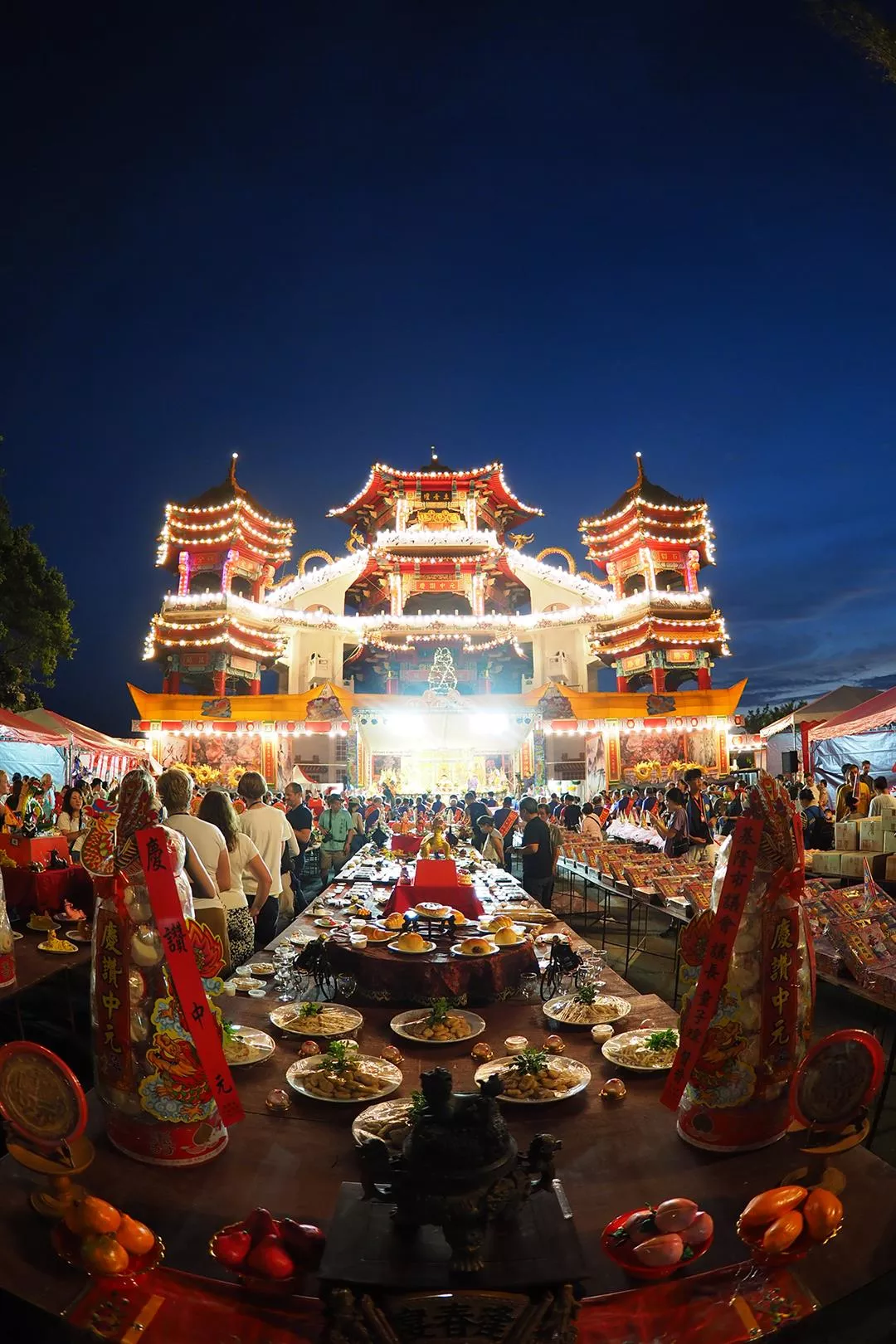
The Main Salvation Altar in Keelung’s Zhongzheng Park is illuminated by gorgeous lights, giving this port city a magical vibe during the seventh month in the lunar calendar.
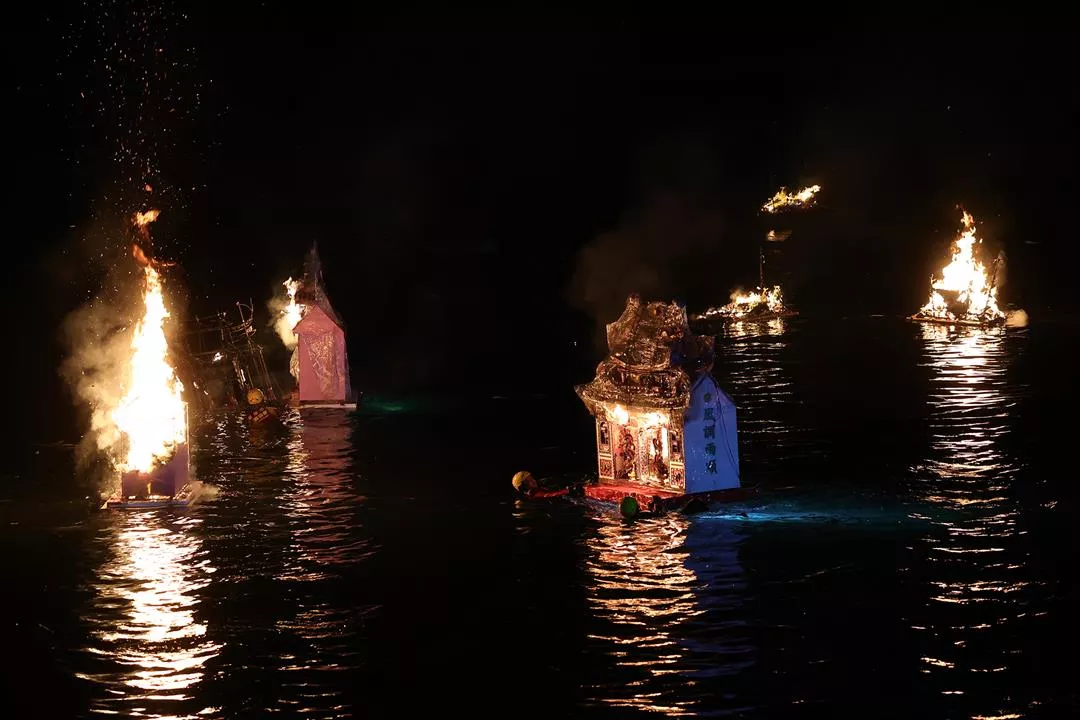
By sending water lanterns out into the sea, people in Keelung invite the homeless ghosts to come ashore and partake of their food offerings.
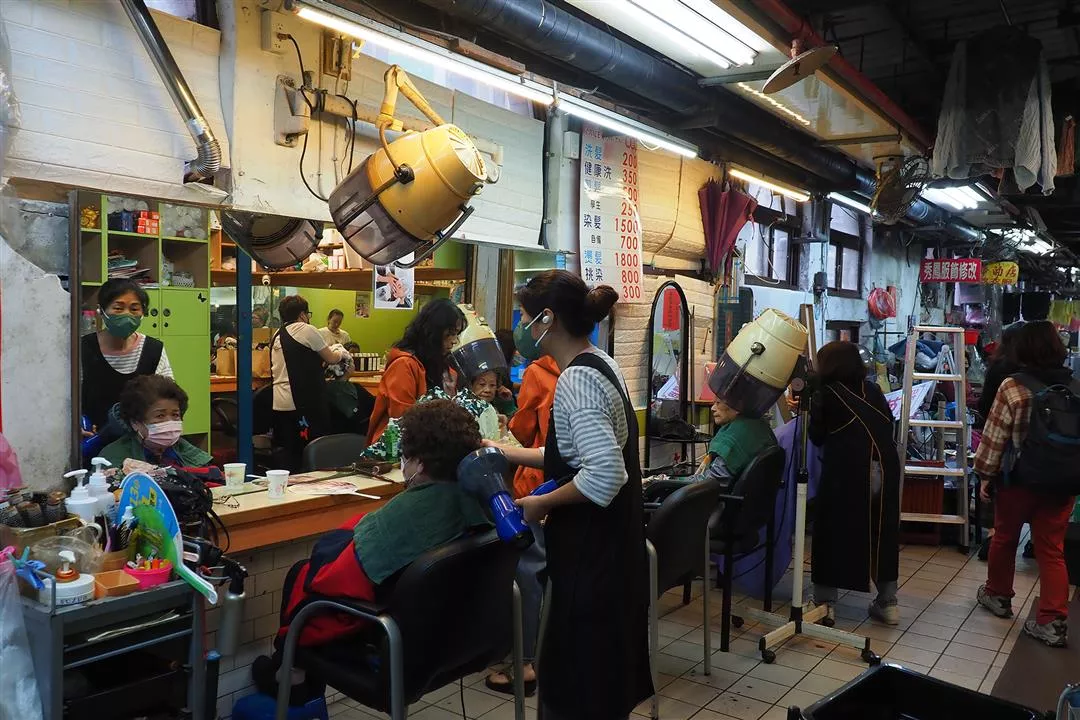
Vintage perm machines jut out from the wall in Keelung’s Ren’ai Market. Customers sit in front of the mirrors to get a hair wash, perm, or facial, or to have their eyebrows trimmed.
Magic in ordinary life
Even though we have to wait till the seventh lunar month to see Keelung at its most magical, the city has much to offer throughout the year.
Following Su, we arrive at Qing’an Temple, the historic site that witnessed the reconciliation between immigrant communities from Zhangzhou and Quanzhou. The temple is dedicated to the sea goddess Mazu, but also enshrined here are numerous other deities who look after different spheres of life. Dense rows of red lanterns hang from the beams inside the temple, bearing the prayers of believers. Smoke rises slowly from an incense burner. Ordinary though it may be, the scene somehow oozes a magical appeal.
Su then takes us to the second floor of Ren’ai Market to satisfy our gustatory yearnings. This labyrinthine market devotes its first floor to fresh produce, and its second floor to cooked food, while also supplying other daily necessities. Owing to Japanese and American influences, coffee took root in Keelung culture very early. Even in this traditional market, we can catch sight of baristas drawing circles in the air with their gooseneck kettles, with siphon coffee makers and other equipment laid out on their bars. Nearby is a nail bar with its neatly arranged collection of colorful nail polishes, furnished with old-fashioned comfy armchairs. While buying groceries, housewives stop here to add a touch of beauty to their lives.
Threading our way through this tangled wood of little shops, we spot a wall hung with mirrors, with vintage wall-mounted perm machines jutting out above them. Customers are seated in front of the mirrors to have their hair washed or permed, to get a facial, or to have their eyebrows trimmed. It’s hard to believe we’re still inside a traditional market. Isn’t it surreal to have such different worlds packed into one building?
.jpg?w=1080&mode=crop&format=webp&quality=80)
Gold Leaf
Gold Leaf is a drama series produced by Taiwan Public Television Service and released in 2021. Based on the life of Jiang Axin (Chiang Ah-hsin), a tea merchant in Hsinchu County’s Beipu Township, the series recounts the story of how Taiwanese tea entered its second boom on the global stage during the postwar years of 1949–55. Gold Leaf brings in a variety of realistic themes to flesh out the spirit of the age, including political changes, business maneuvers, and international relations. (courtesy of Taiwan Public Television Service)
Historic architecture
We visit Beipu, where the story of Gold Leaf unfolds. Standing in front of Jin Guang Fu Mansion, a national historic monument, local bookshop owner Chen Wan-cheng tells us that more than a century ago the region of Da’ai, which encompassed today’s Beipu, Baoshan, and Emei townships, was populated by indigenous people, and ethnic Chinese settlers found it difficult to make inroads into the area. In 1835 the Qing government, in a bid to develop Hsinchu, commissioned Jiang Xiuluan from the local Hakka community to lead the enterprise. The Jin Guang Fu Company was set up with twofold aims: to defend ethnic Chinese interests against the indigenous peoples, and to establish new plantations. Jin Guang Fu Mansion remains the best-preserved set of plantation offices from that era. The word Jin—“gold” in Chinese—has auspicious connotations, while Guang stands for Guangdong, and Fu for Fujian. The name of the company reveals that the planters included immigrants from those two Chinese provinces. In important ways, this was a collaborative project that attested to the reconciliation between different immigrant groups.
Jiang Xiuluan’s descendants are now scattered across various parts of Beipu. Opposite Jin Guang Fu Mansion is Tianshui Hall, the Jiang family’s ancestral home. The buildings here have pitched roofs with upturned swallowtail ridges, inviting passersby to crane their necks and admire the elegant forms. Still inhabited by members of the Jiang family, Tianshui Hall is not open to the public.
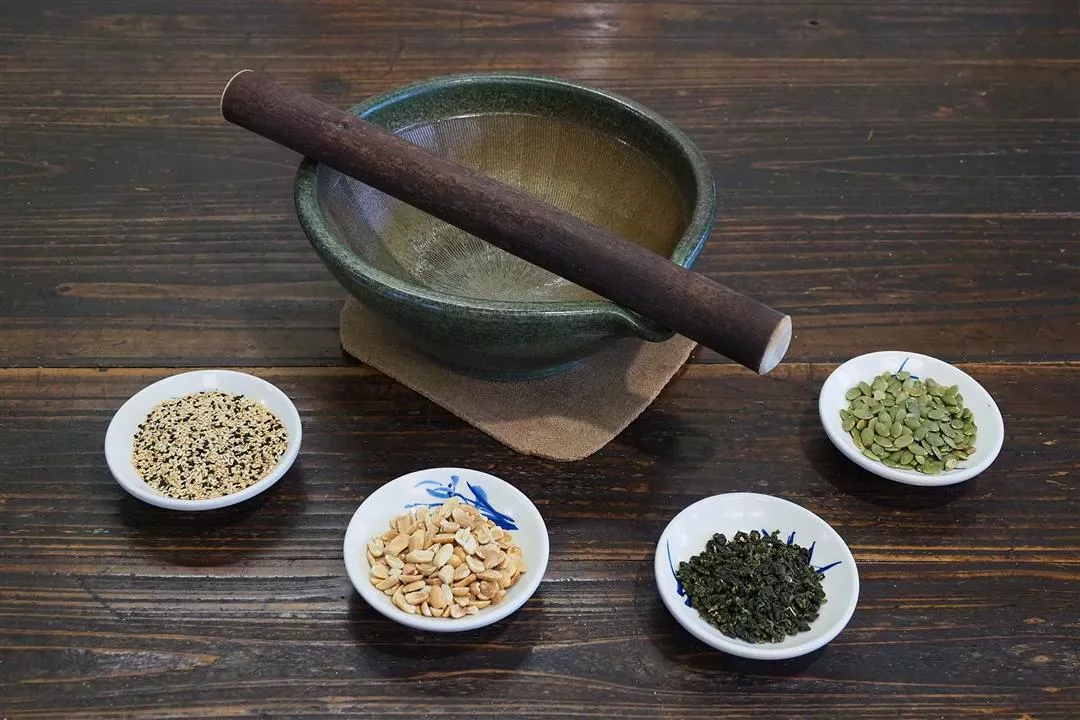
Hakka leicha (ground tea) is one of Beipu’s local specialities
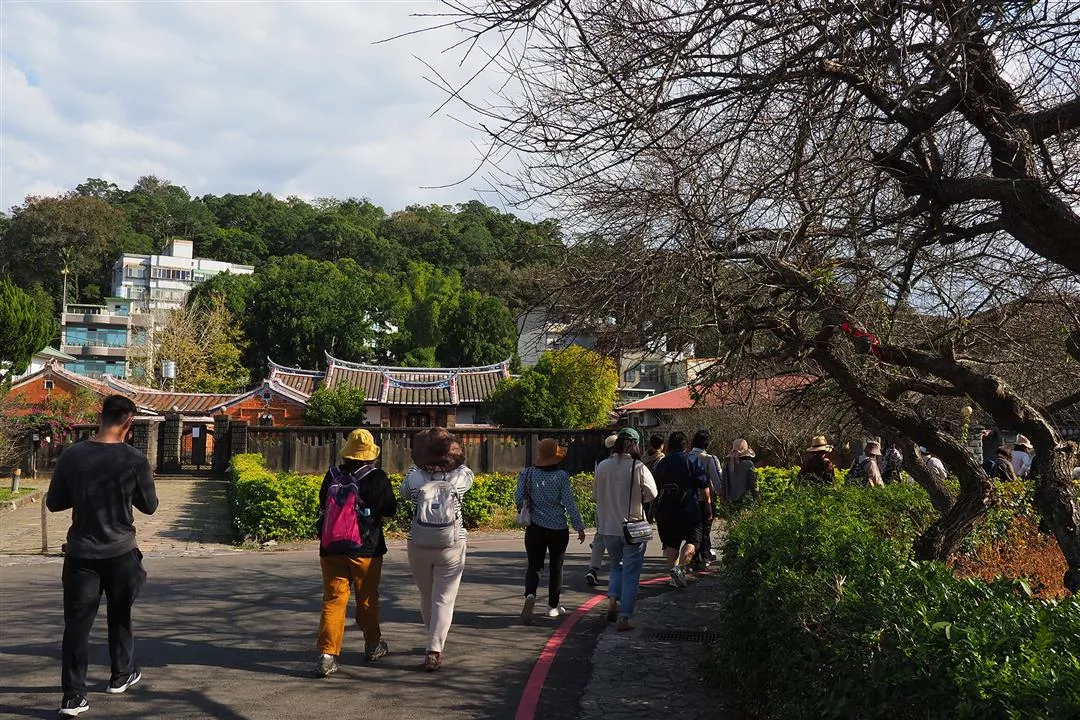
Featuring an elegant gateway and upturned swallowtail ridges, Tianshui Hall is one of the groups of old buildings that attract our attention in historic Beipu, Hsinchu County.
Redeeming the ancestral home
Beipu has a hilly terrain consisting mainly of soft, loose soil and gravel. While not suitable for growing rice, the place provides a perfect environment for tea plantations. This is why Beipu boasts an illustrious history of tea cultivation stretching all the way back to the close of the Qing Dynasty, and is home to the precious, high-quality Oriental Beauty tea. The Jiang family used to own Taiwan’s biggest tea factory. Furnished with modern facilities, the tea giant focused its efforts on exporting black tea and Oriental Beauty tea, with export volumes reaching their highest levels in the years after World War II. Those years were what we know as the era of “gold leaf.”
In the 1950s, however, major tea-producing countries such as India and Sri Lanka recovered their production capacities. International competition, combined with other challenges related to inflation and management issues, led to the bankruptcy of Jiang Axin’s Yung Kuang Company. The mansion that the Jiangs had built for their own occupancy and for entertaining foreign guests was mortgaged to a bank, and the family was dispersed. It was not until five decades later, in 2012, that Jiang’s descendants put together funds to redeem the mansion. Restoration took two years to complete, and in 2018 Taiwan Public Television Service began the production of Gold Leaf, a story of business wrangles based on the life of Jiang Axin. The restored mansion provided one of the settings for this drama series.
Chiang A-Hsin Mansion now offers guided tours by appointment. Most of the guides are members of the family. Blessed with their own memories of this historic edifice, they’re able to regale visitors with stories from insiders’ perspectives. The guide who welcomes us is Fred Huang, Jiang Axin’s grandson-in-law and chairman of the Chiang A-Hsin Education Foundation.
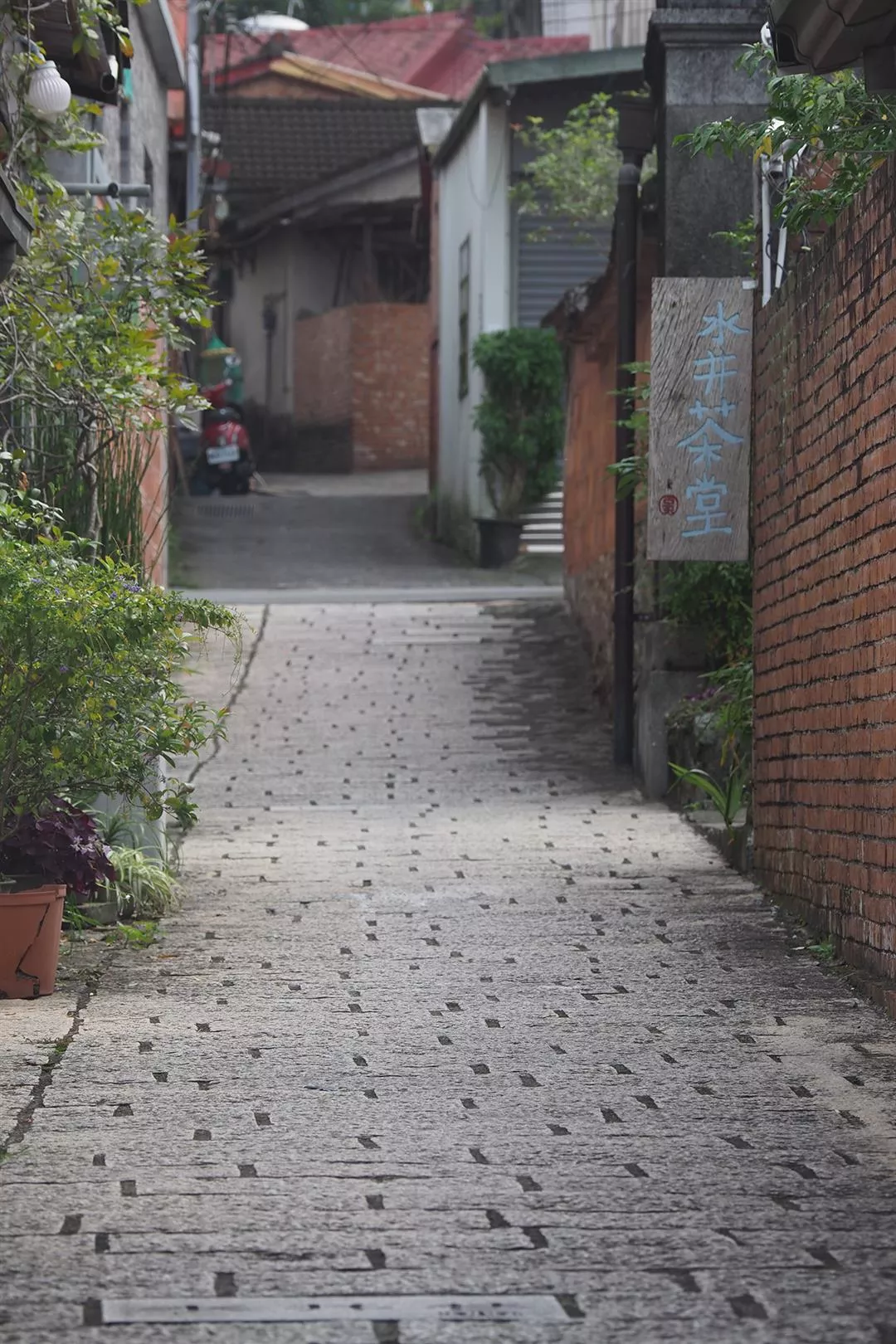
Beipu’s winding streets afford picturesque views at every turn.
Walking into Gold Leaf
While its exterior sports Western architectural features such as semicircular pediments and bay windows, the interior of the mansion exudes Japanese charm. Huang explains that the architecture here is a melange of Western and Japanese styles. For example, the step up from the hallway into the drawing room is reminiscent of the genkan, the entryway area inside Japanese houses and apartments. The drawing room is enclosed by panels which can be removed to create a more airy, connected space—this, too, is inspired by traditional Japanese interior design. The loving care given to the building is embodied in every minute detail here, from corners and ceilings to window frames. “The moldings in this house vary from one room to another. There are more than 100 ornamental carvings. Every time I try to identify the exact number, I lose count at about 100,” quips Huang.
Taiwanese people make a point of incorporating symbols of good omens into the houses they build. But this time-honored practice does not always sit easily with Western architectural designs. “The architects skillfully and unobtrusively embedded auspicious images into the modern design.” Huang points out the hexagonal turtle-shell shapes on the ceiling, patterns of coins, and the bat motifs hidden among the wood carvings. These symbols of longevity, prosperity, and good fortune reveal themselves to the observant eye at every turn.
Remarkably, following the restoration of the mansion, all the pieces of furniture that had been removed or given away decades ago were returned to their old home.
Gold Leaf embraces many scenic locations across Taiwan. Some of the scenes set in and around the ancestral house in the series were filmed at the Xiao Family Complex in Pingtung County’s Jiadong Township and Yusan Hall in Changhua County’s Yongjing Township, both of which are listed historic sites. The character KK’s living quarters were filmed at the former residence of the philosopher Yin Hai-kuang in Taipei. For scenes of tea production, the crew settled on the Daxi Tea Factory in Taoyuan and the Sun Moon Lake Antique Assam Tea Farm in Nantou County. The Taipei Guest House was chosen for the site of a tea exhibition supposedly held in Britain. Other venues, including Taipei’s Zhongshan Hall, the Ten Terrace Houses of Dihua Street in Dadaocheng, and Hualien’s Ruiwudan Theater, lent themselves to scenes of enduring charm. In turn, these real places have become popular destinations that promise to delight tourists.
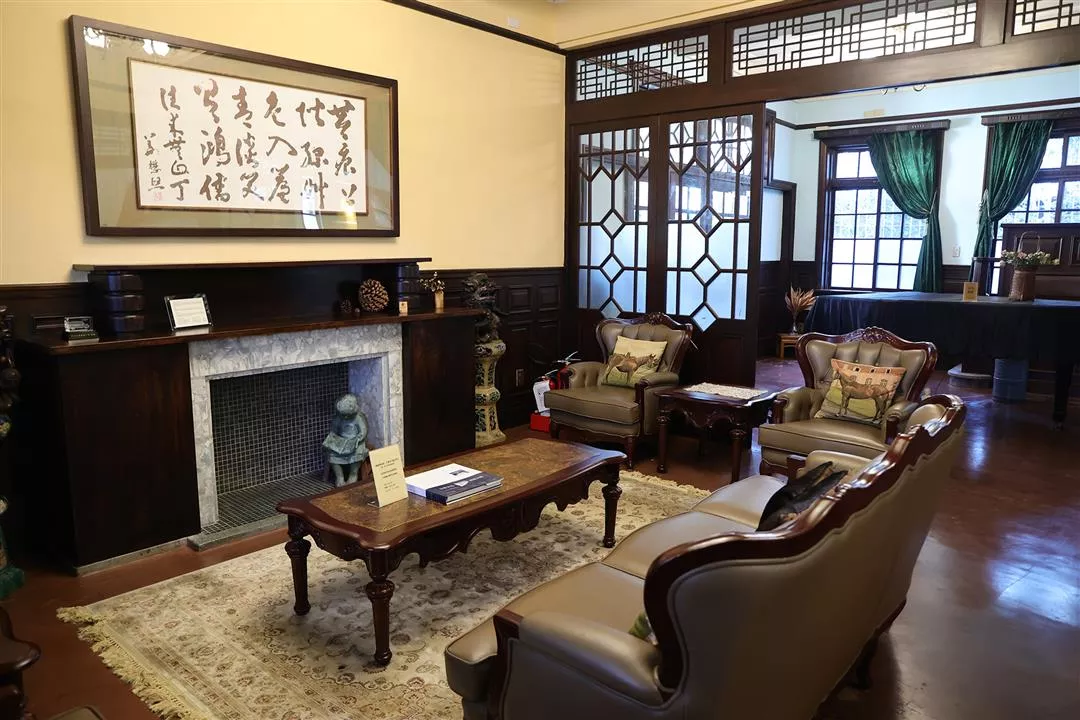
Chiang A-Hsin Mansion was mortgaged to a bank because of the bankruptcy of Jiang Axin’s Yung Kuang Company. Five decades on, Jiang’s descendants successfully put together funds to redeem the mansion and restore it to its former glory.
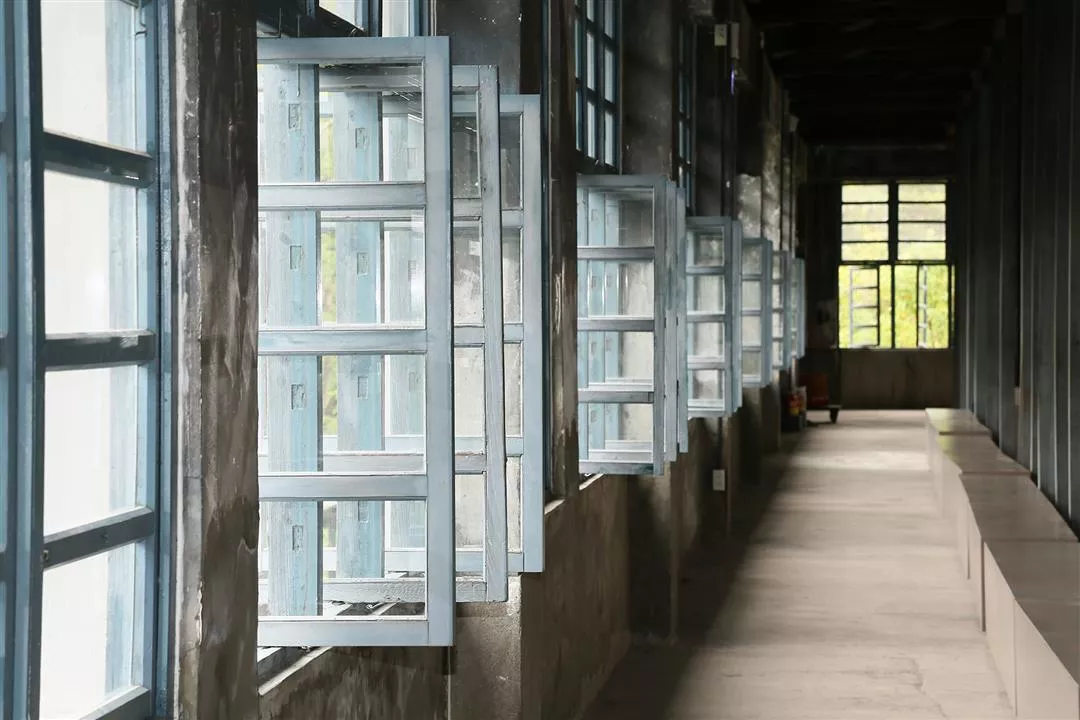
The Daxi Tea Factory in Taoyuan has appeared in Gold Leaf.

@List.jpg?w=522&h=410&mode=crop&format=webp&quality=80)
-1@List.jpg?w=522&h=410&mode=crop&format=webp&quality=80)




